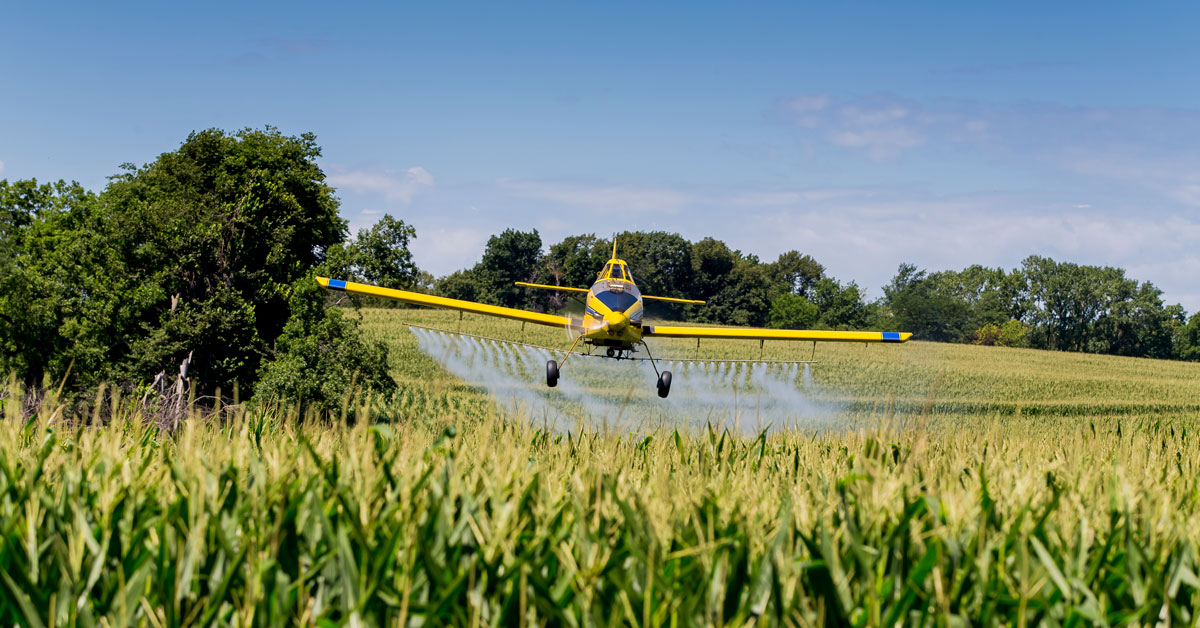
DowDupont (Corteva) maize is tolerant to herbicides and produces insecticides
The first application for approval of CRISPR/Cas plants is now in the European Food Safety Authority (EFSA) register. Maize DP915635 is tolerant to the herbicide glufosinate and produces an insecticidal toxin found in specific ferns growing on trees. DowDupont is marketing its genetically engineered plants under the company name Corteva, and also has filed several patent applications for the plants, some of which have already been granted in Europe.
The maize was generated with a combination of old and new genetic engineering methods (GE). To deliver the CRISPR/Cas "gene scissors" into the plant cells, they are first bombarded with small particles with a gene gun (an "old GE" method). In consequence, the cells produced the enzyme for the gene scissors which then inserted a DNA sequence into the maize genome. This additional DNA sequence is meant to facilitate the insertion of other genes and therefore is called a "landing pad". In a next step, again involving "old GE", a further gene construct is inserted into the "landing pad" in the maize genome, conferring tolerance to the herbicide and producing the fern toxin.
This laborious way of transferring the genes is necessary because CRISPR/Cas is less efficient at inserting longer DNA sequences. In comparison to the methods of "old GE", the resulting plants do not represent any real progress with respect to their traits or lower risks. However, the "landing pad" might render the production of transgenic plants more efficient and could be seen as advantageous for the company.
“In the last 30 years, the biotech companies have mostly generated and marketed plants with herbicide tolerance and insecticidal toxins. In result, the environmental impact has been increased,” said Christoph Then for Testbiotech. “It is interesting to see that CRISPR/Cas does not bring real benefits in this case: The multistep process can result in many unintended changes of the genome that go along with risks. At the same time, the plant traits do not provide real advantage for the environment.”
DowDupont already has patent protection for its CRISPR/Cas plants in Europe: Patent EP3191595 covers gene scissor applications in maize and soybeans, including the resulting transgenic plants with the "landing pad". In addition, patents EP3102592 and EP3102684 cover transgenic plants with the fern toxin. Besides these three granted European patents, DowDupont has filed many other patent applications on the technology and the resulting plants.
Riddled with unintended mutations
Adding to Testbiotech's comments, GMWatch points out that the starting maize is a transgenic GMO with a glufosinate-tolerance gene inserted and that the subsequent addition of a landing pad to facilitate the insertion of transgenes makes it doubly a transgenic GMO.
The fact that CRISPR/Cas was used to target the integration of the landing pad is within this transgenic procedure context.
This product will likely be riddled with unintended mutations from the multiple GM procedures used:
1. The generation of the glufosinate-tolerant starting maize variety.
2. Plant tissue culture at all stages.
3. GM transformation process for insertion of the landing pad and insertion of the fern insecticide-encoding gene.
4. Off-target and on-target mutations from the CRISPR/Cas.
All these could combine into a genomic mess, with major unknown consequences to health and the environment. It is highly likely that Corteva hasn’t investigated these. It is EFSA's responsibility to tell it to do so.
Main source of comment: Testbiotech
https://www.testbiotech.org/en/press-release/first-application-approval-crisprcas-plants-eu
Additional comment by GMWatch
Further information:
The application of DowDupont
https://www.testbiotech.org/content/application-authorisation-maize-dp915635-pioneer
The patents of DowDupont
https://www.testbiotech.org/content/patents-crispr-maize-dowdupont
A publication on the "landing pad"
https://www.frontiersin.org/articles/10.3389/fpls.2020.00535/full









